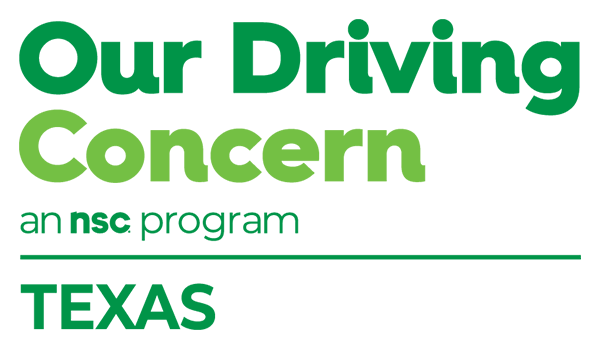Safety Coach
Free of Risk
The Fourth of July holiday period is one of the most exciting times of the summer season. We celebrate America’s independence with backyard pool parties and fireworks that light up the night sky. Let’s also celebrate the opportunity to keep each other safe:
- At work
- On the road
- In the community
Let’s focus on impairment-related safety issues. Here are three ways you can work to keep your employees and their family members safe this summer.
At Work
Join us for Workplace Impairment Training, delivered virtually or in person. You’ll be guided through realistic scenarios and practice activities designed to help you recognize and respond to the many types of impairment, including impairment from consumption of alcohol and other drugs, fatigue or mental distress.
Take what you learn back to your location and support worker wellbeing.
- Learn more and schedule your free session
- Register to attend virtually on Tuesday, Aug. 6
On the Road
Help raise awareness of risks associated with drug-impaired and drunk driving. More than 2,225 people were killed in crashes nationwide during the Fourth of July period from 2018-2022, according to the National Highway Traffic Safety Administration. That’s nearly 450 Fourth of July holiday crash deaths every year.
- Drivers accounted for more than 1,400 of those fatalities
- 39% of those drivers were drunk
Further, a NHTSA study found 26% of drivers seriously injured or killed in crashes in the U.S. from 2019 to 2021 had THC, the mind-altering chemical found in marijuana, in their system.
Encourage everyone on your team to make plans for a safe ride home from Fourth of July events. Designate a sober driver or arrange to be picked up if you’re attending a party where alcohol will be served. Impairment begins with the first drink. Share these free resources to increase your public outreach efforts.
- NHTSA: Drug-impaired driving; drunk driving
- Texas Department of Transportation: Faces of Drunk Driving
- Free poster: Your Designated Driver
In the Community
Be a safety ambassador. Stock your toolbox and promote a culture of safety:
- Seat belt safety: Buckle up – in the front seat and the back seat, on short trips or long journeys; download and play this 1-minute video during a safety meeting, or post the video on your intranet site
- Speeding: Display this vintage safety poster – Don’t Be a Speed Demon
- Distracted driving: Get this poster to focus on the three main types of distraction (available in English or Spanish)
- Pedestrians: Improve pedestrian safety awareness and education at your workplace
This year, on the Fourth of July, be sure to light a path forward with safety.

Tailgate Talk
Hot Car Training
Last year, four children died in hot cars in Texas, according to research conducted by Jan Null, an adjunct professor at San Jose State University and champion of pediatric vehicular heatstroke prevention. His work is published online at noheatstroke.org. One of the children who died in Texas was a 3-month old boy who was left in a vehicle in Southeast Houston on a 102-degree day in September.
Nobody wants to see or hear about that happening ever again. Here’s how you can become a heatstroke safety champion, just like Null. Educate yourself and everyone you know about risks involving kids and hot cars with free online training from the National Safety Council:
- Children in Hot Cars: The course takes about 15 minutes to complete, and certificate of completion is provided at the end the training, which is available in English and Spanish.
This free training has many practical applications and can be delivered to your entire workforce. Fill out this Group Delivery of Courses request form. Parents and caregivers on your team will benefit, as will many others, because the course is meant to be used as:
- Prerequisite training in car seat distribution programs
- Introductory training for people interested in becoming child passenger safety technicians
- Organizational training for people transporting children
- Staff training for healthcare providers and first responders
- Diversionary training for those in violation of child passenger safety laws
Your team will learn about the three primary circumstances that have led to children dying in hot cars and how they can act to prevent these tragedies. More than 970 children have died in hot cars in the U.S. since 1998, according to Null’s research. That’s an average of about 38 each year. More have died in Texas (142) than any other state. Some children are forgotten, others gain access to the vehicle on their own or are knowingly left behind.
Nearly one-quarter of hot car deaths occur in a parked car at the driver’s place of work – a corporate lot, for example. By raising awareness and providing education, we can eliminate these preventable tragedies.

Survey Says …
New survey findings released by the National Safety Council show it’s not just the U.S. Department of Transportation and traffic safety advocates who support a Safe System Approach to roadway safety – the public does too.
Conducted by the Texas A&M Transportation Institute through a Road to Zero Community Traffic Safety Grant, the survey examined the beliefs of adults in the U.S. related to the Safe System Approach and various safety-related concepts, including roadway use behavior and perceptions of road safety and safety strategies. Most participants agreed with the core principles of the approach, such as people make mistakes and roadway systems should be designed so mistakes are less likely to result in death or serious injury.
Three more key findings:
- Three-quarters of participants expressed moderate or great concern about their safety and the safety of family and friends on roads
- Two-thirds or more of participants supported various strategies addressing safer people, safer roads, safer speeds, safer vehicles and post-crash care
- Nearly 83% of participants supported their local government doing more to improve the safety of roads in their community
Learn more: Survey Finds Overwhelming Support for Safe System Approach to Roadway Safety

